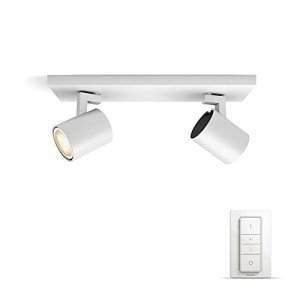The Ultimate Guide to Buying Wall Lights in the UK
Wall lights are not only functional elements in a home; they likewise act as necessary parts of interior decoration. With their ability to light up dark areas, produce ambience, and boost the aesthetic appeal of your spaces, wall lights have ended up being increasingly popular among homeowners and designers alike. This article offers an in-depth look into the considerations, styles, types, and advantages of wall lights in the UK, making it simpler for you to select the ideal fixtures for your home.
Why Choose Wall Lights?
Wall lights provide various advantages that make them a preferable choice for home lighting:
- Space-Saving: Unlike floor lamps or table lamps, wall lights do not inhabit floor space, giving you more room for other home furnishings.
- Adaptability: Available in different styles, sizes, and finishes, wall lights can fit effortlessly into any room, from contemporary kitchen areas to vintage-themed living rooms.
- Ambient Lighting: Wall lights can develop a warm and welcoming environment, making them ideal for areas such as bedrooms, corridors, and dining rooms.
- Job Lighting: They are excellent for focused lighting over jobs such as reading or cooking.
Kinds Of Wall Lights
When acquiring wall lights, it's important to consider your needs and style choices. The following table highlights a few of the most typical kinds of wall lights readily available in the UK:
| Type of Wall Light | Description | Ideal Locations |
|---|---|---|
| Sconces | Decorative fixtures that can include flair and style to a wall. | Living rooms, corridors |
| Image Lights | Created to light up art work or photos, boosting visual interest. | Galleries, office |
| Wall Washers | Fixtures that project light onto walls, producing a soft glow and ambiance. | Living areas, bed rooms |
| Swing Arm Lights | Adjustable lights that can be relocated to numerous positions for directed lighting. | Reading nooks, desks |
| Flush or Semi-Flush Mounts | Near to the wall, providing broad, even lighting without using up area. | Corridors, stairs |
Key Considerations When Buying Wall Lights
1. Design and style
The design of your wall lights must match your total interior design. Whether you prefer modern, traditional, rustic, or industrial designs, consider the following:
- Material: Options consist of metal, wood, plastic, or glass.
- Color: Think about the color design and how the light's color fits with your existing design.
- Shape: From geometric kinds to timeless designs, the shape of the component can significantly affect the visual.
2. Purpose and Functionality
Determine the function your wall lights will serve.
- Ambient Lighting: Choose fixtures that provide a soft radiance throughout the room.
- Task Lighting: Select adjustable or concentrated fixtures for specific activities.
- Accent Lighting: Use decorative fixtures to highlight artwork or architectural features.
3. Size and Scale
Guarantee the size of the wall light is proper for the space.
- Match to Room Size: Larger rooms may require bigger fixtures, while smaller rooms benefit from compact styles.
- Spacing: When installing numerous wall lights, preserve even spacing to produce a cohesive appearance.
4. Installation and Maintenance
Consider the ease of installation and maintenance.
- Hardwired vs. Plug-in: Hardwired fixtures frequently look more refined, while plug-in choices are much easier to install.
- Upkeep Needs: Choose products that are simple to clean and preserve to prolong the life of the lights.
5. Energy Efficiency
Including energy-efficient lighting is essential for both sustainability and cost-effectiveness. Search for:
- LED Options: These take in less energy and have a longer life expectancy.
- Dimmable Features: Fixtures with dimming abilities permit for more control over the light intensity.
Popular Wall Light Styles in the UK
The UK market offers a diverse variety of wall light styles. Here are some popular choices to consider:
- Vintage and Retro: Featuring elaborate styles, frequently with brass finishes, perfect for duration homes.
- Modern Minimalism: Clean lines and easy structures lend a contemporary feel, perfect for modern interiors.
- Industrial Chic: Utilising products like metal and glass, preferred in metropolitan and loft-style homes.
- Scandinavian: A concentrate on functionality and simpleness with natural products and soft shades.
- Art Deco: Luxurious styles with geometric shapes, perfect for including a touch of glam.
Frequently Asked Questions (FAQs)
Q1: What is the average rate range for wall lights in the UK?
A1: Wall lights can vary widely in cost, normally varying from ₤ 15 for more standard choices to over ₤ 200 for designer or high-quality fixtures.
Q2: Can I set up wall lights myself?
A2: If you have basic electrical knowledge, you can install wall lights yourself. However, employing a professional electrician is advised to make sure safety and compliance with guidelines.
Q3: Are wall lights appropriate for outdoor use?
A3: Yes, there are specific wall lights developed for outdoor installations, usually made with weather-resistant materials. Make sure to look for IP scores to make sure suitability for outdoor use.
Q4: What kind of bulb is best for wall lights?
A4: LED bulbs are advised due to their energy effectiveness, longevity, and low heat output, making them ideal for different wall light fixtures.
Q5: How high should wall lights be set up?
A5: Generally, wall lights must be installed between 150cm to 180cm from the floor, but it might vary depending upon personal choice and the specific room's purpose.
Wall lights have the power to improve the comfort, state of mind, and design of any living space. By considering the types, designs, and useful elements outlined in this guide, people looking to buy wall lights in the UK can make informed choices. Eventually, the ideal choice will illuminate your home in more ways than one, turning basic lighting into a trendy upgrade that enhances your living environment. Whether repurposing Lighting And Lamps or buying new designs, wall lights are a versatile option worth considering.

